Romanian Legends
Dragobete
“Dragobete” is a traditional Romanian holiday celebrated on February 24. Dragobete was the son of Baba Dochia, which stands for the main character in the myth related to spring arrival and the end of the harsh winter. Due to his endless kindness he was chosen – according to some sources, by Virgin Mary – to be the Guardian of Love. The day is particularly known as “the day when the birds are betrothed”. It is around this time that the birds begin to build their nests and mate. On this day, considered locally the first day of spring, boys and girls gather vernal flowers and sing together. Maidens used to collect the snow that lay on the ground in many villages and then melt it, using the water in magic potions throughout the rest of the year. Those who take part in “Dragobete” customs are supposed to be protected from illness, especially fevers, for the rest of the year. If the weather allows, girls and boys pick snowdrops or other early spring plants for the person they are courting. In Romania, “Dragobete” is known as a day for lovers, rather like Valentine’s Day. It is a common belief in some parts of Romania that, during this celebration, stepping over a partner's foot leads to the dominant role in the relationship. Dragobete customs vary from region to region. In the countryside there is an old tradition with girls and boys going into the woods to pick flowers. When they return home, the traditions says that boys were running after girls to kiss them. If the girl liked the boy she lets him kiss her. There is a saying in Romania that makes a lot of sense regarding this: “Dragobete kisses the girls”.
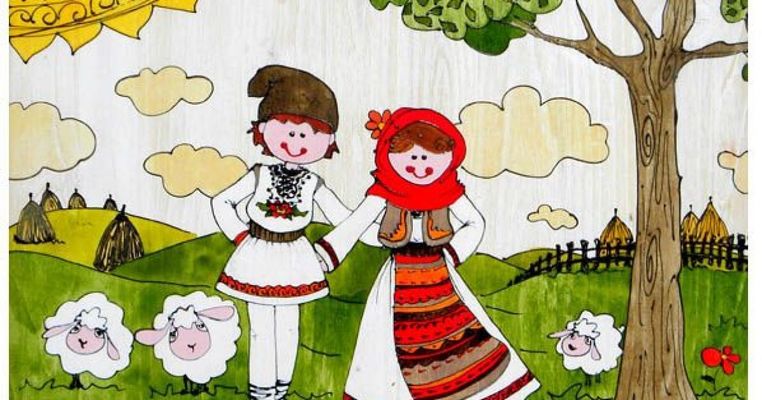
Gabriela Mirela Jugar, coordinator ”C. Noica” High School Sibiu
The Legend of Dragobete.docx
Dragobete
„Dragobetele” este o sărbătoare tradițională românească celebrată pe 24 februarie. Dragobete era fiul lui Baba Dochia, care reprezintă personajul principal din mitul legat de sosirea primăverii și sfârșitul iernii aspre. Datorită bunătății sale nesfârșite a fost ales – potrivit unor surse, de Fecioara Maria – să fie Păzitorul Iubirii. Ziua este cunoscută în special drept „ziua în care păsările sunt logodite”. În această perioadă păsările încep să-și construiască cuiburile și să se împerecheze. În această zi, considerată local prima zi de primăvară, băieții și fetele adună flori de primăvară și cântă împreună. Fecioarele obișnuiau să adună zăpada care stătea pe pământ în multe sate și apoi o topeau, folosind apa în poțiuni magice pe tot restul anului. Cei care participă la obiceiurile „Dragobete” ar trebui să fie protejați de boli, în special de febră, în restul anului. Dacă vremea o permite, fetele și băieții culeg ghiocei sau alte plante de primăvară timpurie pentru persoana pe care o curtează. În România, „Dragobetele” e cunoscută ca o zi a îndrăgostiților, mai degrabă ca Ziua Îndrăgostiților. Este o credință comună în unele părți ale României că, în timpul acestei sărbători, călcarea peste piciorul partenerului duce la rolul dominant în relație. Obiceiurile dragobetelor variază de la regiune la regiune. În mediul rural există o veche tradiție cu fetele și băieții care merg în pădure să culeagă flori. Când se întorc acasă, tradiția spune că băieții alergau după fete pentru a le săruta. Dacă fetei îi plăcea băiatul, îl lasă să o sărute. Există o vorbă în România care are mult sens în acest sens: „Dragobete sărută fetele”.
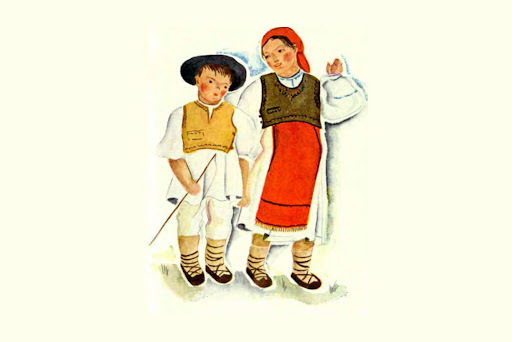
Daniela Cioplea, profesor, Liceul ”Constantin Noica” Sibiu, România
Paparuda
“Paparuda” is the most common name for the magic rite of provoking rain, practiced in times of drought. The game is played on a third Thursday after Pentecost; however, it can also occur on any summer day, after a prolonged drought. It is played by young girls, less often by boys under the age of 14. The procession consists of a variable number of characters, of which at least one or two must be masked. They are undressed and then wrapped in leaves and garlands of boz (burdock, beech, oak, hazelnut). The hood was tied above the head with the elbows up and covered the whole body like a green leaf. The twigs were strewn with red ribbons and beads. The procession walked through the village from house to house, and in the courtyard, the attendants sang a ritual song, clapping their hands, and the paparuda played a hop. “Paparuda” invokes the onomatopoeic rain through dancing, clapping, snapping fingers, snapping improvised drums in pans, but especially the rhythm and content of the magic text. During the game or after its completion, it is mandatory to water the poplar or the whole procession with water. For their dance they are rewarded with ritual gifts that signify abundance and abundance: eggs, corn, wheat, curd, milk, rolls, fruits, money, etc., sometimes old clothes which link the custom to the cult of the dead. When they have finished walking through the village, the poppies go to a running water, light straws on the water, then throw the clothes from the leaves on the water.
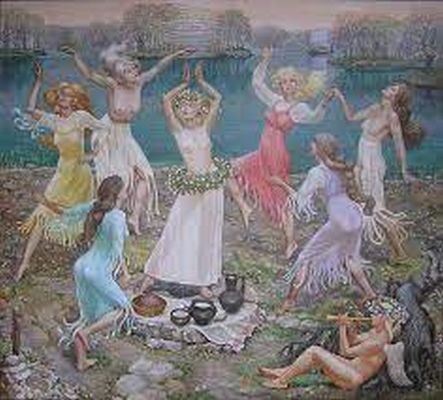
Georgeta Sava, deputy director”C. Noica” High School Sibiu Romania
The Legend of the Rain.docx
Paparuda
”Paparuda” este denumirea cea mai răspândită a ritului magic de provocare a ploii, practicat pe timp de secetă. Jocul este practicat în a treia joi după Rusalii; poate însă avea loc și în orice zi de vară, după o secetă prelungită. Este jucat de fete tinere, mai rar și de băieți, sub 14 ani. Alaiul e alcătuit dintr-un număr variabil de personaje, dintre care cel puțin una-două trebuie să fie mascate. Acestea sunt dezbrăcate și apoi înfășurate în frunze și ghirlande de boz (brusture, fag, stejar, alun). Gluga de boz era legată deasupra capului cu cotoarele în sus și acoperea tot corpul ca un con de verdeață. Rămurelele erau împestrițate cu panglici roșii, cu salbe de firfirici. Cortegiul umbla prin sat de la o casă la alta, și în curte, însoțitoarele cântă un cântec ritual, bătând din palme, iar paparuda joacă un dans săltăreț. ”Paparuda” invocă onomatopeic ploaia prin dans, prin bătăi din palme, prin plesnetul degetelor, prin răpăitul tobelor improvizate din tigăi, dar mai ales prin ritmul si conținutul textului magic. În timpul jocului sau după terminarea lui este obligatorie udarea cu apă a paparudei, ori a întregului alai. Pentru dansul lor sunt răsplătiți prin daruri rituale ce semnifică abundența și belșugul: ouă, mălai, grâu, caș, lapte, colaci, fructe, bani, etc., uneori și haine vechi ceea ce leagă obiceiul de cultul morților. După ce au terminat cu mersul prin sat, paparudele merg la o apă curgătoare, aprind paie pe apă, apoi își aruncă pe apă și veșmintele din frunze.
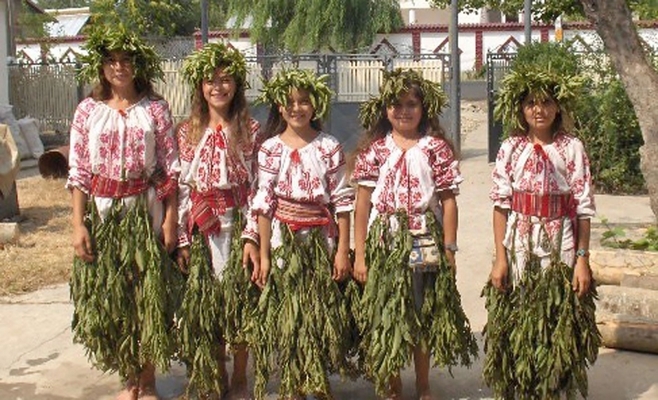
Alina Mihoc, profesor, Liceul ”Constantin Noica” Sibiu, România
Martisor
”Martisor” is a symbol of spring, of return to life. In the beginning, it was represented by a coin, then it turned into small river stones painted in white and red, strung on a thread. Legend has it that once the Sun went down in a village, at the choir, taking the form of a boy. A kite stalked him and kidnapped him, locking him in a dungeon. The world was saddened. The birds stopped singing, the springs stopped flowing, and the children stopped laughing. No one dared to confront the kite, but one day a strong young man decided to go and save the sun. Many of the earthlings led him and gave him their best to help him defeat the kite and set the sun free. His journey lasted three seasons: summer, autumn and winter. He found the dragon's castle and they started fighting. They fought for days until the kite was shot down. Weakened and wounded, the young man releases the Sun. He ascends to heaven rejoicing and rejoicing the world. Nature revived, people rejoiced, but the brave man did not get to see spring. The warm blood from his wounds flowed into the snow. As it melted, white flowers, snowdrops, heralds of spring rose. Even the last drop of the boy's blood flowed in the immaculate snow. Since then, the young people have been weaving two tassels: one white and one red. They offer them to the girls they love or to those close to them. Red means love for all that is beautiful, reminiscent of the color of the strong man's blood. White symbolizes the health and purity of the snowdrop, the first flower of spring. From March 1, Romanians have the habit of parents to tie a coin to their children's hands or necks, so that they are lucky all year round and healthy. The setting of the ”martisor” is usually done before sunrise. Nowadays, it is given mainly to children, girls and women, to protect their tenderness and sensitivity. The girls wash themselves all year with the water from the snow left until March 1, to be beautiful and loving. After 12 days of wearing the ”martisor”, it is removed and tied to a fruit tree, to bear much fruit that year. It is also said that if the weather is nice, then we will have a sunny spring.
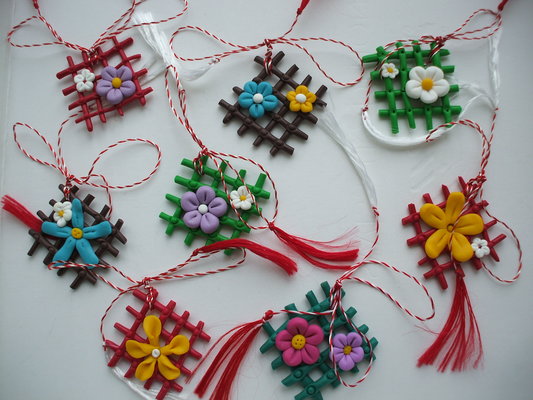
Sânziana Salomie, teacher in ”Constantin Noica” High School Sibiu
The Legend of the Little March Amulet.docx
Mărțișor
”Mărţişorul” este un simbol al primăverii, al revenirii la viaţă. La începuturi, acesta era reprezentat printr-o monedă, apoi s-a transformat în mici pietre de râu vopsite în alb şi roşu, înşirate pe o aţă. Legenda spune că, odată, Soarele coborî într-un sat, la horă, luând chipul unui fecior. Un zmeu l-a pândit şi l-a răpit dintre oameni, închizându-l într-o temniţă. Lumea se întristase. Păsările nu mai cântau, izvoarele nu mai curgeau, iar copiii nu mai râdeau. Nimeni nu îndrăznea să-l înfrunte pe zmeu, dar într-o zi, un tânăr voinic s-a hotărât să plece să salveze soarele. Mulţi dintre pământeni l-au condus şi i-au dat din puterile lor ca să-l ajute să-l biruie pe zmeu şi să elibereze Soarele. Drumul lui a durat trei anotimpuri: vara, toamna şi iarna. A găsit castelul zmeului şi au început lupta. S-au înfruntat zile întregi până când zmeul a fost doborât. Slăbit de puteri şi rănit, tânărul eliberă Soarele. Acesta se ridică pe cer înveselind şi bucurând lumea. A reînviat natura, oamenii s-au bucurat, dar viteazul n-a ajuns să vadă primăvara. Sângele cald din răni i s-a scurs în zăpadă. Pe când aceasta se topea, răsăreau flori albe, ghioceii, vestitorii primăverii. Până şi ultima picătura de sânge a flăcăului se scurse în zăpada imaculată. De atunci, tinerii împletesc doi ciucuraşi: unul alb şi unul rosu. Ei le oferă fetelor pe care le iubesc sau celor apropiaţi. Roşul înseamnă dragoste pentru tot ce este frumos, amintind de culoarea sângelui voinicului. Albul simbolizează sănătatea şi puritatea ghiocelului, prima floare a primăverii. De 1 Martie, românii au obiceiul ca părinţii să lege copiilor la mână sau la gât câte o monedă, pentru ca aceştia să aibă noroc tot anul şi să fie sănătoşi. Punerea mărţişorului se face de obicei înainte de răsăritul soarelui. El este dăruit, în zilele noastre, în principal copiilor, fetelor şi femeilor, pentru a le proteja gingăşia şi sensibilitatea. Fetele se spală tot anul cu apa din zăpada rămasă până la 1 martie, pentru a fi frumoase şi drăgăstoase. După 12 zile de purtat mărţişorul, acesta se scoate şi se leagă de un pom roditor, pentru a face multe fructe în anul respectiv. Se mai spune că dacă e vreme frumoasă, atunci vom avea o primăvară însorită.

Mihai Ordean, director al Liceului Teoretic ”Constantin Noica” Sibiu
Myths and Legends from Turkey
The Myth of Sarıkız
One of the most famous Turkish legends, Sarıkız is about the highest peak of the Kazdağları mountains in Turkey’s Marmara and Aegea regions. A long time ago, a beautiful girl named Sarıkız lived in the village of Güre and all the young men fell in love with her and asked for her hand in marriage. When her father didn’t see any of them fit enough to become her husband, the young men turned against him and concocted a lie that Sarıkız had done something sinful, and demanded that he either killed her or moved away from the village. Because the father didn’t have it in him to kill his beloved daughter he decided to take her far away to the peak of the Kazdağları Mountains hoping that she would survive on her own. The young girl succeeded in surviving and even helped wanderers who had lost their way. When her father found out that she was still alive, he visited her to find that she had become a goose farmer (kaz means goose in Turkish). Nowadays the peak that has Sarıkız’s tomb is named after her, while the peak where her father is buried is called Babatepe (Father’s Peak).
The Myth of Aynalı Mağara (Mirrored Cave)
This legend comes from Amasya and is about a king’s daughter who was so exceptionally beautiful that she had to cover her face. When her father decided it was time for her to marry he sent out news that whoever was able to lift her veil and withstand her beauty, looking upon her as more than just a beautiful face, would become her husband. Upon this news, a mass of eligible young bachelors arrived in Amasya. One by one the young men arrived on the throne, set up at Amasya Square, to lift the princess’ veil but were immediately overcome by her beauty as their hands shook or knees buckled. This continued for days, until one day a very poor but very brave young man said that he wanted to try his luck. When the young man lifted the beautiful princess’ veil, such an electrifying and illuminating forces was set off that a fire surrounded the two as they died in the heat of their connection. Their bodies are buried in a cave outside the town and every time the sun shines on the rock façade of their tomb, the surface shines as bright as the princess’ beautiful face.
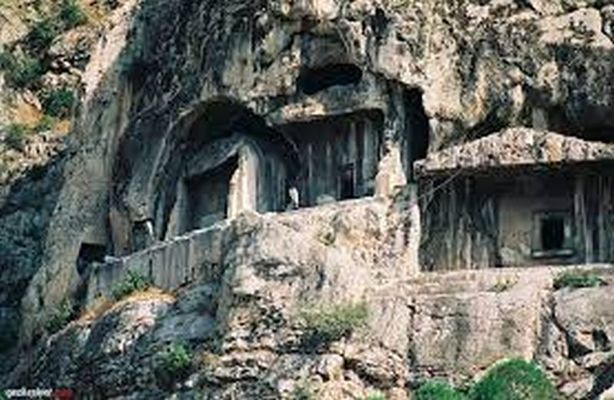
The Legend of Kız Kulesi
Istanbul’s Kız Kulesi (Maiden’s Tower) has a lot of stories associated with it, but the most famous is the one about the Seljuk Sultan and his beautiful daughter. When the sultan saw a nightmare where his daughter died after being bitten by a snake, he sent her away to live in the tower in order to protect her life. The daughter lived there for years and one day, after she overcame a very heavy illness, the people sent her many gifts to celebrate her good health. One of the gifts happened to be a basket of grapes and unbeknown to the village woman who took it to the tower, a small snake was buried deep within the sweet fruits. At night, when the daughter was sleeping, the snake slithered out and, like her father’s nightmare, the princess died of a snake bite.
The Legend of the Kütahya Fortress
According to legend, Kütahya was once inhabited by giants and one day their leader told them to line up shoulder-to-shoulder so that they could transport boulders from the Nemrut Mountains to what is now known as the Hisar Hill. The giants then began to construct a fortress and it took a long time for the walls to go up and the roads to be scraped out by their hands. The leader, who is now 1,000-years-old, also had a son who is only 300-years-old and suddenly died. The leader, who witnessed death for the first time, became very weary and gazed upon the fortress he built, saying that if he had known that death existed in this region he would have never put a stone on top of another.
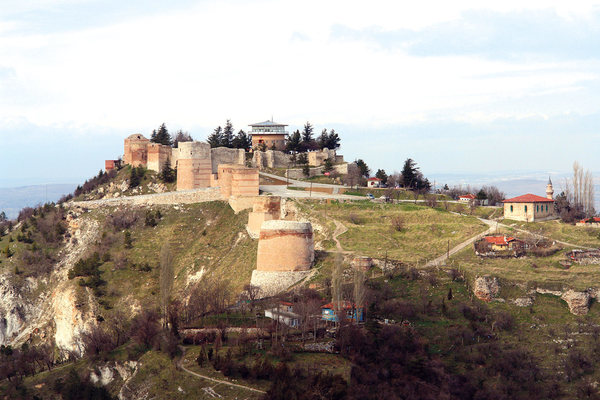
Ümit Gök, teacher Vali M. Lütfullah Bilgin Ortaokulu, Turkey
Myths and Legends from Turkey.pdf
Türk Efsaneleri
Sarıkız Efsanesi
En ünlü Türk efsanelerinden biri olan Sarıkız, Türkiye'nin Marmara ve Ege bölgelerindeki Kazdağları dağları'nın en yüksek zirvesi hakkındadır. Uzun zaman önce Güre köyünde Sarıkız adında güzel bir kız yaşıyordu ve bütün gençler ona aşık olup evlilik elini istediler. Babası bunlardan hiçbirini kocası olacak kadar uygun görmeyince gençler ona sırt çevirerek Sarıkız'ın günahkar bir şey yaptığı yalanını uydurdular ve onu öldürmesini ya da köyden uzaklaşmasını istediler. Babasının sevgili kızını öldürmek gibi bir niyeti olmadığı için kendi başına hayatta kalacağını umarak onu Kazdağları Dağlarının zirvesine götürmeye karar verdi. Hayatta kalan genç kız, aynı zamanda yolunu kaybetmiş gezginlere de yardımcı oldu. Babası hala hayatta olduğunu öğrenince, onu ziyaret etti. Günümüzde Sarıkız'ın mezarına sahip olan zirveye onun adı verilirken, babasının gömüldüğü zirveye Babatepe (Baba Zirvesi) adı verilmektedir.
Aynalı Mağara Efsanesi
Bu efsane Amasya'dan geliyor ve aşırı güzelliği yüzündenyüzünü örtmek zorunda kalan kralın kızı hakkında. Babası evlenme zamanının geldiğine karar verdiğinde, peçesini kaldırabilen ve güzelliğine dayanabilen, ona sadece güzel bir yüzden daha fazlası olarak bakan kişinin kocası olacağına dair haberler gönderdi. Bu haber üzerine Amasya'ya çok sayıda genç bekar geldi. Gençler birer birer, prensesin örtüsünü kaldırmak için Amasya Meydanı'nda kurulan tahta geçtiler, ama elleri titrerken ya da dizleri bükülürken güzelliği karşısında hemen yenildiler. Bu günlerce devam etti, bir gün çok fakir ama çok cesur bir genç adam şansını denemek istediğini söyleyene kadar. Genç adam güzel prensesin örtüsünü kaldırdığında, o kadar heyecan verici ve aydınlatıcı bir güç ortaya çıktı ki, ikisinin de etraflarını bir ateş sardı ve yanarak öldüler. Cesetleri kasabanın dışındaki bir mağaraya gömülür ve mezarlarının kaya cephesinde güneş her parladığında, yüzeyde prensesin güzel yüzü kadar parlak bir şekil oluşur.
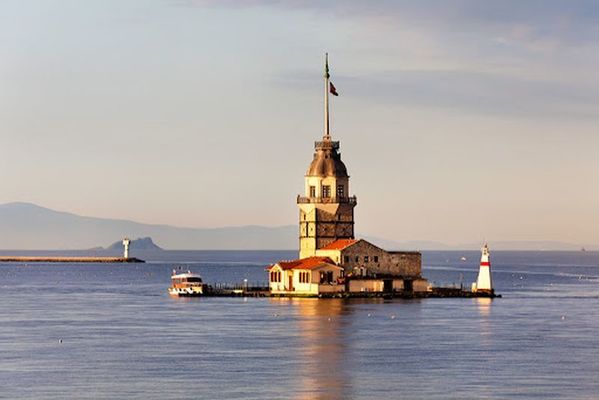
Kız Kulesi Efsanesi
İstanbul'un Kız Kulesi (Kız Kulesi) ile ilgili birçok hikayesi vardır, ancak en ünlüsü Selçuklu Sultanı ve güzel kızı ile ilgili olanıdır. Sultan, kızının bir yılan tarafından ısırıldıktan sonra öldüğü bir kabus gördüğünde, hayatını korumak için onu kulede yaşamaya gönderdi. Kızı yıllarca orada yaşadı ve bir gün, çok ağır bir hastalığın üstesinden geldikten sonra, insanlar sağlığını kutlamak için ona birçok hediye gönderdi. Hediyelerden biri bir sepet üzümdü ve onu kuleye götüren köy kadınının haberi olmadan, tatlı meyvelerin derinliklerine küçük bir yılan gömüldü. Gece, kız uyurken, yılan dışarı fırladı ve babasının kabusu gibi, prenses bir yılan ısırığından öldü.
Kütahya Kalesi Efsanesi
Efsaneye göre Kütahya bir zamanlar devlerin yaşadığı bir yerdi ve bir gün liderleri onlara omuz omuza dizilmelerini ve böylece kayaları Nemrut Dağları'ndan şimdiki Hisar Tepesi olarak bilinen yere taşıyabilmelerini söyledi. Devler daha sonar bir kale inşa etmeye başladılar ve duvarların yukarı çıkması ve yolların elleriyle kazınması uzun zaman aldı. Şu anda 1000 yaşında olan liderin, sadece 300 yaşında olan ve aniden ölen bir oğlu da vardı. Ölüme ilk kez tanık olan lider, çok üzüldü ve inşa ettiği kaleye baktı ve eğer bu dünyada ölümün var olduğunu bilseydi, asla bir taş üstüne taş koymayacağını söyledi.
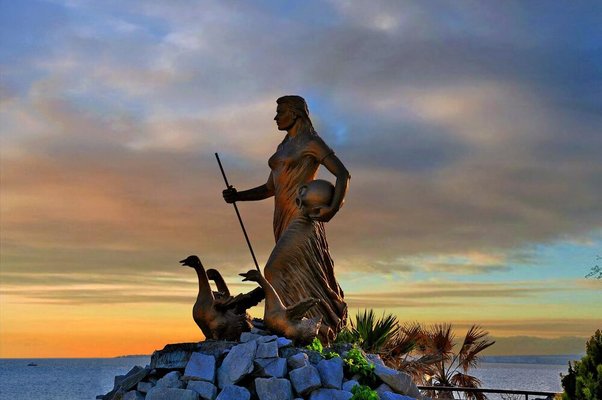
Türk Efsaneleri.pdf
Sümer Bulut, öğretmen Vali M. Lütfullah Bilgin Ortaokulu, Türkiye
The Legend of the Golden Duck
The 8th C class students got to know the legend of Artur Oppman entitled ”The Legend of the Golden Duck”. It is a work about a poor shoemaker - Lutek, who becomes rich thanks to a princess turned into a golden duck, but cannot share this wealth with anyone. The moral of a fairy tale: no wealth is happy if it cannot be used to help the needy. The students Marcel K. and Ola O. translated the legend into English. Some of the group (Pola K., Iga P., Julia P., Marcel K.) took care of preparing the set and costumes for use during the performance.
Mariola Podolska-Maculewicz, project coordinator, Szkoła Podstawowa Nr 2
The Legend of the Golden Duck P31.pptx
Legendę Złota Kaczka
Uczniowie klasy 8c poznali legendę Artura Oppmana pt. „Złota kaczka”. Jest to utwór o biednym szewczyku - Lutku, który dzięki królewnie, zaklętej w złotą kaczkę, staje się bogaty, ale nie może się tym bogactwem z nikim podzielić. Morał bajki: żadne bogactwo nie cieszy, jeśli nie można przeznaczyć je na pomoc potrzebującym. Uczniowie Marcel K. oraz Ola O. przełożyli legendę na język angielski. Część grupy z kolei (Pola K., Iga P., Julia P., Marcel K.) zajęła się przygotowaniem scenografii oraz kostiumów do wykorzystania podczas spektaklu.
Ewa Hinburg, teacher, Szkoła Podstawowa Nr 2 im. Michała Kajki w Nidzicy
The Legends of Our Region
The students collected the available information about the legends and legends of our region. It turned out that many of them functioned in the oral transmission of the inhabitants and therefore it is difficult to establish their authorship. One of the famous authors turned out to be Maria-Zientara Malewska - a poet, teacher and activist, living in Warmia and Mazury (although she actually wrote down well-known works). In order to prepare a multimedia presentation, a team of students had to refer to historical sources, read the content of the most popular legends of our region and choose, in the students' opinion, the most representative of the areas they inhabit. The presentation includes: titles of legends - stories, names of some authors and examples of legends in the form of videos.
Mariola Podolska-Maculewicz, project coordinator, Szkoła Podstawowa Nr 2
Legends - P33 ENG.pptx
Legendy naszego regionu
Uczniowie zebrali dostępne informacje, dotyczące podań i legend z naszego regionu. Okazało się, że wiele z nich funkcjonowało w przekazie ustnym mieszkańców i z tego powodu trudno ustalić ich autorstwo. Jedną ze znanych autorek okazała się Maria-Zientara Malewska – poetka, nauczycielka i działaczka, mieszkająca na terenie Warmii i Mazur (choć tak naprawdę zajmowała się ona spisywaniem znanych już utworów). Aby przygotować prezentację multimedialną zespół uczniów musiał sięgnąć do źródeł historycznych, zapoznać się z treścią najbardziej popularnych legend naszego regionu oraz wybrać, zdaniem uczniów, najbardziej reprezentatywne dla terenów, które zamieszkują. Prezentacja zawiera: tytuły legend - podań , nazwiska niektórych autorów oraz przykłady legend w formie filmików.
Ewa Hinburg, teacher, Szkoła Podstawowa Nr 2 im. Michała Kajki w Nidzicy
The Legend of the King of the Raven - Art contest for younger students
During the Fairy Tales Evening class 3 c students listened to one of the most beautiful Polish legends, and then made illustrations that were an exhibition in the class. "The Legend of the Raven King" is a story about how the bugler's good deed helped save the inhabitants of Poznań. The legend tells about friendship and loyalty, but also teaches respect for animals and the need to help the weaker. The Evening of Fairy Tales and Legends also interested the older students of our school. During the meeting, older students listened to the legends of 'Mysterious springs in Napiwoda', 'The Legend of Łyna river', 'The legend of the Tatar Stone', 'The Legend of Lajkonik' and Błędne Góry Wały', and prepared illustrations depicting the most interesting fragments of the legends in their opinion. All the works were highly appreciated in the art competition. The next step was to summarize the legends in English, which the participants of the task coped with perfectly.
Mariola Podolska-Maculewicz, project coordinator, Szkoła Podstawowa Nr 2
Erasmus+ Folklorica P34 P35 Legends.pptx
Legenda o Królu Kruka - konkurs plastyczny dla uczniów młodszych
Podczas Wieczoru Baśni i Legend uczniowie klasy 3 c wysłuchali jedną z piękniejszych polskich legend, a następnie wykonali ilustracje, które stanowiły wystawę w klasie. „Legenda o Królu Kruków” to historia o tym, jak dobry uczynek hejnalisty pomógł ocalić mieszkańców Poznania. Legenda opowiada o przyjaźni, lojalności, ale również uczy szacunku do zwierząt oraz tego, że należy pomagać słabszym. Wieczór Baśni i Legend zainteresował również starszą młodzież naszej szkoły. Podczas spotkania uczniowie klas starszych wysłuchali legend p.t. ‘Tajemnicze źródło w Napiwodzie’, ‘Legenda o Łynie’, ‘Legenda o Kamieniu Tatarskim’, ‘Legenda o Lajkoniku’ i ‘Błędne góry Wały’, oraz przygotowali ilustracje przedstawiające ich zdaniem najciekawsze fragmenty danych legend. Wszystkie prace zostały wysoko ocenione w konkursie plastycznym. Kolejnym etapem było streszczenie legend w języku angielskim z czym uczestnicy zadania poradzili sobie doskonale.
Mirosława Kaszubska, teacher, Szkoła Podstawowa Nr 2 im. Michała Kajki
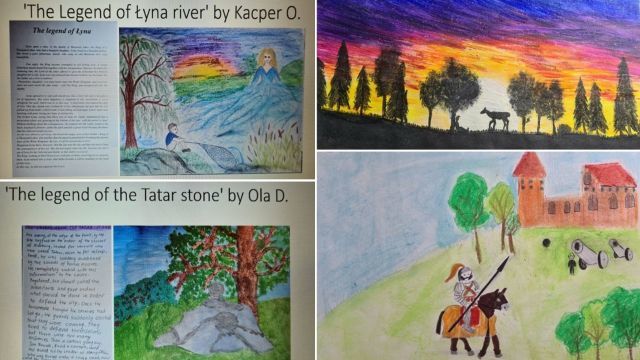
Erasmus-Folklorica-P34-Lajkonik.pptx
The Spanish Legends
The Spanish pupils Pablo, Pilar and Javier achieved a presentation about three legends: “The Hesperides Garden”, “San Borondón”, and “Gara and Jonay”. In “The Hesperides Garden” there was a tree that gave you some gold apples and that could give the power to be immortal. There was about a group of four daughters that were from Atlas and they have lived in the occidental islands. The Canary Islands have something related to it and its inhabitants believe in this myth. “San Borondón” is the most popular legend of the Canary Islands. The name of the island is due to a monk called Saint Brendan from Ireland. The legend talks about a very big animal (like a whale or an enormous turtle) that has an island in his back. The history of this island is from the XV century. The legend is very old but nobody knows where it’s yet. The story of Gara and Jonay is about two lovers who end up committing suicide by jumping from the top of a mountain that is given the name of Garajonay for this story. Realized in PDF, the presentation was showed to the project partners within the mobility in Cyprus.
Sheila Cerván Vidales, IES Pérez Galdós, Las Palmas de Gran Canaria
The Spanish Legends.pdf
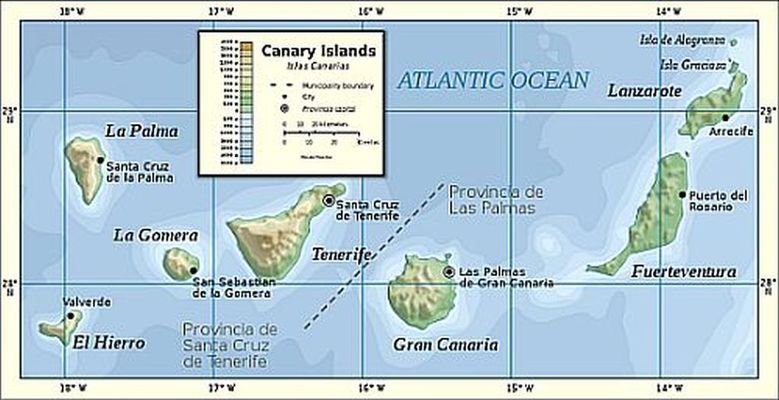
Legendele spaniole
Elevii spanioli Pablo, Pilar și Javier au realizat o prezentare despre trei legende: „Grădina Hesperidelor”, „San Borondón” și „Gara și Jonay”. În „Grădina Hesperidelor” era un copac care îți dădea niște mere de aur și care putea da puterea de a fi nemuritor. Era un grup de patru fiice care erau din Atlas și au locuit în insulele occidentale. Insulele Canare au ceva legat de el și locuitorii săi cred în acest mit. „San Borondón” este cea mai populară legendă a Insulelor Canare. Numele insulei se datorează unui călugăr numit Saint Brendan din Irlanda. Legenda vorbește despre un animal foarte mare (cum ar fi o balenă sau o țestoasă enormă) care are o insulă în spate. Istoria acestei insule este din secolul al XV-lea. Legenda este foarte veche, dar nimeni nu știe încă unde se află. Povestea lui Gara și Jonay este despre doi îndrăgostiți care ajung să se sinucidă sărind de pe vârful unui munte căruia i se dă numele de Garajonay pentru această poveste. Realizată în format PDF, prezentarea a fost prezentată partenerilor de proiect din cadrul mobilității în Cipru.
Raluca Teglaș, profesor al Liceului Teoretic ”Constantin Noica” Sibiu
March-article-1.docx
March-article-2.docx
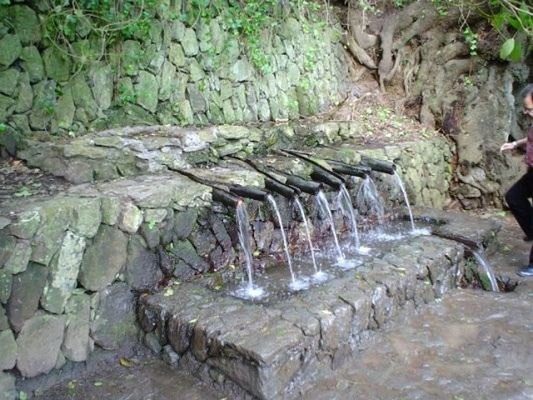
The Cypriot Legends
The castle of Agios Hilarion or Ai Larkos, is located in Cyprus in the occupied province of Kyrenia. It was built by the Byzantines in the 11th century AD. The most famous and mysterious person in Cypriot history, the beautiful and heartless Rigena, is associated with many stories of the island. But more with the history of medieval castles, which hide its secrets. According to the legend, the ruthless Regina chose the top of the now occupied Pentadaktylos to build her fortress. During the construction of this castle, Regina wanted to be present and supervise the work that was being carried out. Sitting on a high cliff, she watched the workers work while giving them instructions. From early in the morning until late at night the workers worked non-stop. When the building was finished, Regina went and sat by the window of one of the rooms of the castle, under which stood a huge cliff that anyone who saw it was stunned. The heartless Regina, having soldiers next to her, called the workers one by one to the room, ostensibly to pay them for their work. When the workers approached to get their money, Regina ordered her soldiers to kill them and throw them out the window on that huge cliff. The cliff was filled with the lifeless bodies of the workers. Regina had planned this plan a long time ago, as she did not want any of the workers to leave the castle alive, for fear that one of them would betray the hiding places and the secrets of the castle. Thus the secrets of the fortification would never be revealed. Their bones, according to legend, are still there.
Eleni Omerou, coordinator, Gymnasium Apostolou Paulou
The Rigena and the Castle of Agios Ilarionas.pptx
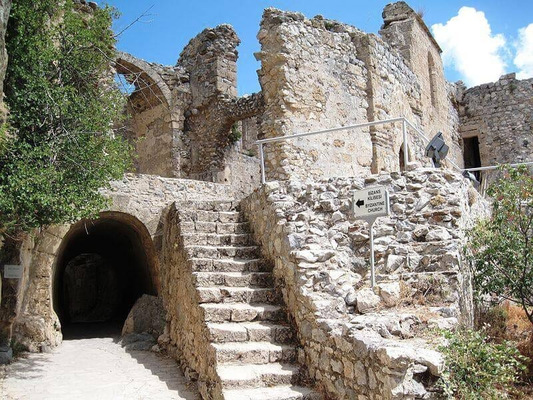
Legendele cipriote
Castelul Agios Hilarion sau Ai Larkos, este situat în Cipru în provincia ocupată Kyrenia. A fost construit de bizantini în secolul al XI-lea. Cea mai faimoasă și misterioasă persoană din istoria cipriotă, frumoasa și fără inimă Rigena, este asociată cu multe povești ale insulei. Dar mai mult cu istoria castelelor medievale, care își ascund secretele. Potrivit legendei, nemiloasa Regina a ales vârful Pentadaktylos acum ocupat pentru a-și construi fortăreața. În timpul construcției acestui castel, Regina a dorit să fie prezentă și să supravegheze lucrările care se desfășoară. Așezată pe o stâncă înaltă, ea îi privea pe muncitori lucrând în timp ce le dădeau instrucțiuni. De dimineața devreme și până noaptea târziu muncitorii lucrau non-stop. Când clădirea a fost terminată, Regina s-a dus și s-a așezat lângă fereastra uneia dintre încăperile castelului, sub care stătea o stâncă uriașă pe care oricine o vedea rămânea uluit. Regina fără inimă, având soldați lângă ea, i-a chemat pe muncitori unul câte unul în cameră, aparent ca să-i plătească pentru munca lor. Când muncitorii s-au apropiat să-și ia banii, Regina le-a ordonat soldaților săi să-i omoare și să-i arunce pe fereastră de pe acea stâncă uriașă. Faleza era plină de trupurile fără viață ale muncitorilor. Regina plănuise acest plan cu mult timp în urmă, întrucât nu dorea ca niciunul dintre muncitori să părăsească castelul în viață, de teamă că unul dintre ei nu va trăda ascunzătoarele și secretele castelului. Astfel, secretele fortificației nu vor fi niciodată dezvăluite. Oasele lor, conform legendei, sunt încă acolo.
Gabriela Mirela Jugar, coordonator, Liceul „C-tin Noica”, Sibiu
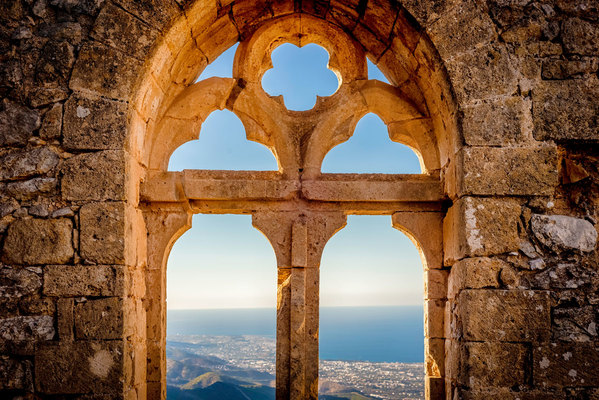
Lithuanian Legends and Folktales
(presented by: Gabija Graužinytė, Indrė Stralkutė, Rapolas Dužinskas, Elija Gruodytė)
1. The Legend of the Establishment of Vilnius
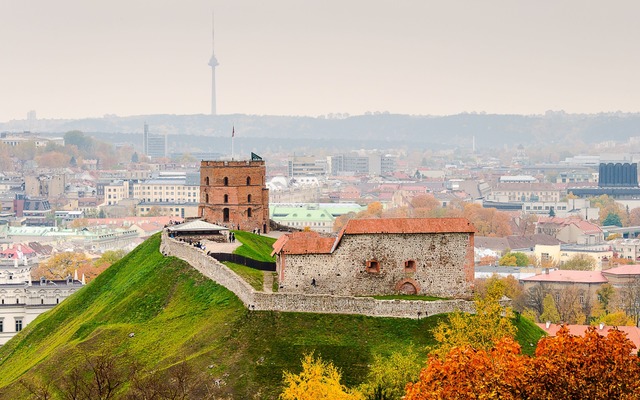
2. The Folktale of Sigutė
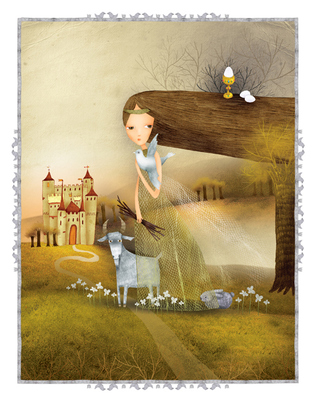
https://drive.google.com/file/d/1EHNFk13is60P4Qu3eoWJ09UF59ICcZ2L/view